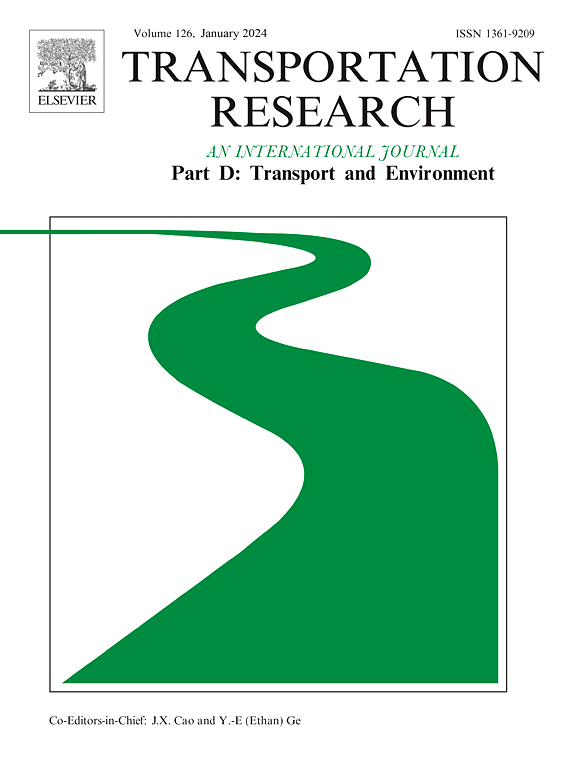建筑环境的改善是否促进了北京内部移民的交通公平?
IF 7.3
1区 工程技术
Q1 ENVIRONMENTAL STUDIES
Transportation Research Part D-transport and Environment
Pub Date : 2024-10-04
DOI:10.1016/j.trd.2024.104445
引用次数: 0
摘要
许多研究和实践利用建筑环境的改善来鼓励绿色交通,因为它具有塑造出行行为的巨大潜力。然而,这些改善措施对弱势群体的公平影响仍未得到充分探讨。本研究旨在解决以下问题:建筑环境改善策略是否促进了交通公平?我们利用北京的一项出行调查,结合能力法和随机参数 Logit 模型,建立了一个多层级离散选择模型,以估算四种假设的建筑环境改善方案的能力变化,并利用 Maximax 原则进行交通公平分析。我们的研究结果表明,增加土地利用组合是提高无车内部移民通勤公平性的优先选择。建议扩大公交线路的覆盖范围,以缓解低收入内部移民的通勤不平等问题。然而,增加道路密度或减少与最近地铁站的距离可能无法有效缓解弱势内部移民的通勤不平等问题。本文章由计算机程序翻译,如有差异,请以英文原文为准。
Does built environment improvement promote transport equity for internal migrants in Beijing?
Numerous studies and practices leverage improvements in the built environment to encourage green transportation due to its significant potential to shape travel behaviors. Yet, the equity impacts of these improvements on vulnerable populations remain underexplored. This study seeks to address the question: whether built environment improvement strategies advance transport equity? Using a travel survey from Beijing and combining the Capability Approach with the Random Parameter Logit model, we develop a multilevel discrete choice model to estimate capability changes for four hypothetical scenarios of built environment improvement and conduct transportation equity analysis using Maximax principle. Our results show that increasing the mix of land use is prioritized to enhance commuting equity for carless internal migrants. Expanding bus route coverage is recommended to alleviate commuting inequality for low-income internal migrants. However, increasing road density or decreasing the distance to the nearest metro station may not effectively mitigate commuting inequities for disadvantaged internal migrants.
求助全文
通过发布文献求助,成功后即可免费获取论文全文。
去求助
来源期刊
CiteScore
14.40
自引率
9.20%
发文量
314
审稿时长
39 days
期刊介绍:
Transportation Research Part D: Transport and Environment focuses on original research exploring the environmental impacts of transportation, policy responses to these impacts, and their implications for transportation system design, planning, and management. The journal comprehensively covers the interaction between transportation and the environment, ranging from local effects on specific geographical areas to global implications such as natural resource depletion and atmospheric pollution.
We welcome research papers across all transportation modes, including maritime, air, and land transportation, assessing their environmental impacts broadly. Papers addressing both mobile aspects and transportation infrastructure are considered. The journal prioritizes empirical findings and policy responses of regulatory, planning, technical, or fiscal nature. Articles are policy-driven, accessible, and applicable to readers from diverse disciplines, emphasizing relevance and practicality. We encourage interdisciplinary submissions and welcome contributions from economically developing and advanced countries alike, reflecting our international orientation.

 求助内容:
求助内容: 应助结果提醒方式:
应助结果提醒方式:


